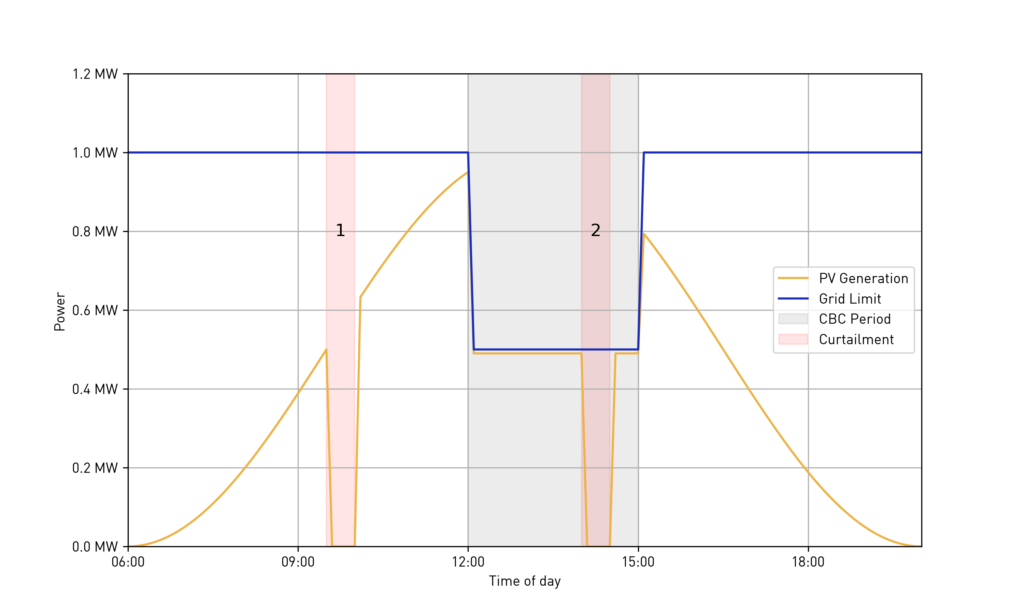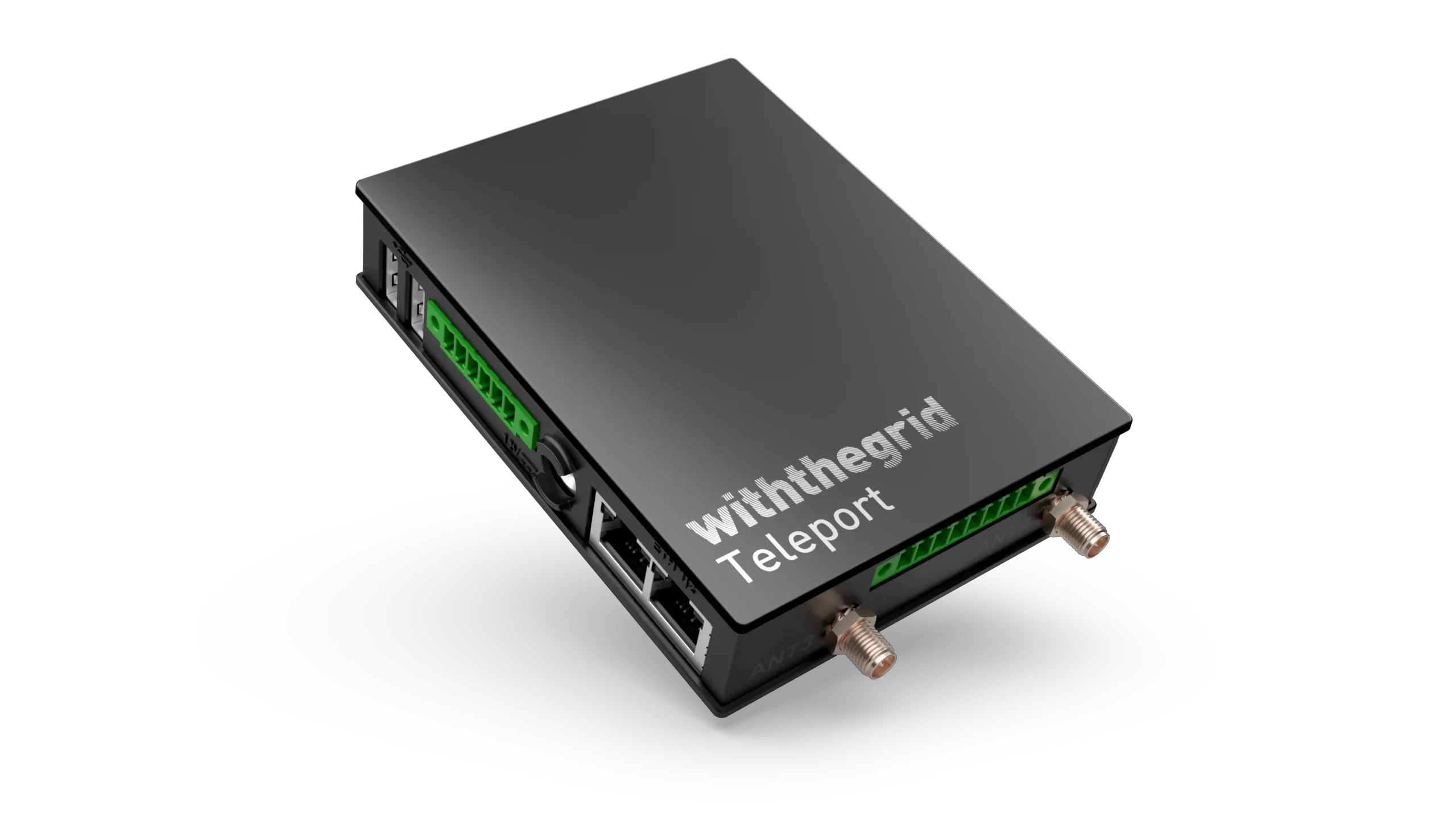Home → Blog → Teleport feature → Combining curtailment and CBC signals simultaneously

By Maarten de Leeuw, Paul Mignot and Anaïs Wampack
Published the 24th of May, 2024
The Teleport now enables participation in balancing and congestion markets by combining curtailment with dynamic feed-in limits. Discover how.
1) Providing congestion management services
Understanding congestion
💡 Congestion occurs when the demand or supply of electricity exceeds the grid’s capacity within a specific area. This can cause outages, economic impacts, and hinders further integration of renewable energy sources.
In the Netherlands, congestion is a nationwide issue. If you observe the Capacity Map by Netbeheer Nederland, you can see that many regions are colored in orange or red, signifying that there is no transport capacity available. By consequence: in some regions, DSOs are placing any new or upgraded grid connection requests on a waiting list.
Traditional vs. alternative approaches
Historically, grid operators relied on extensive and costly grid reinforcements to avoid congestion. But quickly, reinforcements became insufficient on their own, paving the way for alternative solutions to emerge, such as congestion services.
In the Netherlands, congestion services are provided through the platform GOPACS. There are different products, including redispatch (intraday) and capacity limitation contracts (long-term until day-ahead).
Capacity limitation contracts (CBC)
Now deploying at large scale, capacity limitation contracts (CBC) allow grid operators to limit the feed-in capacity of existing renewable generation for a certain time period when congestion is anticipated (at least a day in advance). For example, a customer’s feed-in capacity might be restricted to 50% of normal capacity between 12:00 and 15:00 the next day.
Want to know more about how CBCs work? Please refer to the CBC article.
2) Providing balancing services
Understanding balancing
Beyond local congestion management, the grid needs to be balanced on a national level. The supply for electricity should match the demand at all times. TenneT manages this through different balancing markets: FCR, aFRR, mFRR and the passive imbalance market.
The passive imbalance market is a market where all large grid connections can participate in by changing their actual feed-in or consumption in comparison to what they forecasted the previous day. This market is triggered by the imbalance price.
Negative imbalance prices
During moments when there is too much electricity on the grid, the imbalance price turns negative. It is then economically attractive for generators to temporarily stop feeding power back into the grid by reducing the production of their energy assets. This process is called “curtailment”.
Negative imbalance prices can last very short: they are recalculated and settled at each “imbalance settlement period”, which lasts 15 minutes.
3) The challenge of combining congestion and balancing services simultaneously
A generator has the opportunity to provide both balancing and congestion services. But dual-service provision introduces several complexities and potential risks that must be managed carefully to ensure safe, reliable, and scalable grid operations:
- Which steering signal has priority?
One of the primary challenges is determining which steering signal should be prioritized. If not managed correctly, there could be instances where a curtailment signal meant for balancing might temporarily override CBC settings. For example, if a curtailment command is issued for a 15-minute period, the system could erroneously revert to 100% capacity immediately afterward, thus breaching the CBC limitations.
- Who can send which steering signal?
Multiple parties can issue steering signals:
- Balancing Service Provider (BSP): Responsible for sending curtailment signals related to balancing services.
- Congestion Service Provider (CSP): Issues signals under the GOPACS framework for congestion management.
These roles may be filled by different entities, complicating the signal management process. The possibility of these signals overlapping means there has to be a reliable system to identify and handle each signal, even when they originate from different service providers.
- What system keeps track of the signals?
A system must be in place to coordinate the diverse signals, and be capable of discerning which one to send to the inverters or wind turbines.
- What if there are additional local grid constraints (regardless of a CBC)?
In scenarios where local grid constraints exist independently of CBC, the system must also recognize, respect and never override these limitations.
4) A safe, reliable and scalable solution for curtailment and CBC contracts
To overcome the previously listed challenges, it’s essential to have a local controller. This controller will:
✓ Manage the flows “behind-the-meter”
✓ Manage the grid capacity limits
✓ Ensure that the right control signals are received and prioritized.
That’s why we developed the Teleport. The Teleport acts as a gateway integrating GOPACS and balancing market signals, ensuring efficient and compliant operation. It connects to various energy assets, takes in both feed-in and consumption measurements, and adjusts power production to adhere to grid limits.
Case study 1: Implementing a CBC with the Teleport
Now consider a 1 MW photovoltaic (PV) site under a CBC contract. The site has contracted a CSP’er to manage the signal from GOPACS. The Teleport receives a signal called limitPower. The schedule indicates a temporary reduction in feed-in capacity to 500 kW at the grid of connection, between 12:00 and 15:00 the next day. The payload sent to the Teleport via the API takes the following form:
{
'type': 'limitPower',
'feedIn': 500000,
'consume': null,
"startAt": "2024-05-01T12:00:00.000Z",
"endAt": "2024-05-1T15:00:00.000Z"
}The solar production during the CBC period will then be decreased to 500kW (we are assuming there is no local load). The Teleport ensures that the CBC contract is respected and that the system does not exceed it. The limitPower signal is shown by the blue line (“Grid Limit”) in the image below.
Please note: the fines by the grid operator for not meeting the CBC contract are significant.
Now imagine that on the day the CBC takes place, the PV production is higher than expected, and the imbalance price turns negative in the early morning. The BSP sends a curtailment signal (limitProductionPower) to the Teleport to temporarily reduce the production to zero. This example is shown by the period 1 in the image below. After this short period, the Teleport instructs the PV system to go back to full production.

The day continues, and the CBC takes effect at 12:00. Then, at 14:00, the imbalance price turns negative again. The CBC is active and the PV system is already limited to 500kW feed-in. However, it is economically attractive to limit to 0 feed-in. The BSP sends a new curtailment signal, illustrated by period 2 in the image below.
As previously mentioned, the risk is that after this curtailment period, the system is set back to full production and overrides CBC limit. However, the Teleport ensures post-curtailment that the PV system resumes operations without exceeding the CBC limits – in our case, goes back to 500kW. This illustrates the hierarchical way the limitPower and limitProductionPower commands take effect.
Case study 2: CBC and battery
Now let’s consider a battery behind a meter of 1 MW power. How would the battery operate under a CBC?
At the time of the CBC, the limitPower command sets the feed-in threshold to 500 kW. This command would be scheduled alongside another command called setBatteryOperation.
In this scenario, the battery system would operate within the constraints set by the limitPower command: any request to deliver power above 500 kW will be throttled down to 500 kW. However, within these constraints, the battery would be free to charge and discharge according to the setBatteryOperation command.
5) Maximized revenue and protected grid connection for asset owners
By using the Teleport as a gateway to orchestrate different control signals, asset owners can maximize their revenue by participating in different balancing and congestion markets and ensure that their grid connection remains within its contractual limits.
6) Simplicity and scalability for aggregators and traders
Withthegrid has developed this functionality in cooperation with aggregators and traders and designed it to be a reliable, safe and scalable system. With it, aggregators and traders can keep their curtailment algorithm clean and separate from the complexity of a CBC. It ensures that the hierarchy of the control signals occurs at the place where it is most important: on the grid connection.

specialized in smart flexibility solutions
Want to unlock the flexibility of your assets?
Withthegrid is here to assist you – contact us today!
Or check the use cases of the Teleport.
